
Ingredient
Cassava leaves
The Green Delight: Unveiling the Nutritional Powerhouse of Cassava Leaves
Cassava leaves are dark green, heart-shaped leaves that grow on the cassava plant, scientifically known as Manihot esculenta. They have a slightly rough texture and can vary in size, with some leaves reaching up to 30 centimeters in length. The leaves are rich in nutrients and possess a distinct earthy aroma. When cooked, they become tender and develop a pleasant, slightly bitter taste. Their vibrant green color adds visual appeal to dishes, making them a popular choice in many culinary traditions.
Origins and history
Cassava leaves have a long history of consumption in Africa, particularly in West and Central Africa, where they are a staple in traditional dishes. The cassava plant itself is native to South America and was introduced to Africa during the colonial era. Over time, cassava leaves became an integral part of African cuisine, and their popularity spread to other regions of the world. Today, they are enjoyed in various dishes across different cultures.
Nutritional information
Cassava leaves are a nutritional powerhouse, packed with essential vitamins and minerals. They are a good source of vitamin A, vitamin C, calcium, iron, and protein. Additionally, they are low in calories and fat, making them a healthy choice for incorporating into meals.
Allergens
There are no known allergens associated with cassava leaves.
How to select
When selecting cassava leaves, look for fresh, vibrant green leaves that are free from wilting or yellowing. Avoid leaves with any signs of discoloration or damage. Opt for leaves that are firm and have a crisp texture, as this indicates freshness.
Storage recommendations
To maintain the freshness and quality of cassava leaves, store them in a plastic bag or airtight container in the refrigerator. They can be kept for up to a week, but it is best to use them as soon as possible for optimal flavor and texture.
How to produce
Cassava leaves can be grown by planting cassava cuttings in well-drained soil with sufficient sunlight. Regular watering and proper maintenance are essential for healthy leaf growth. It is important to note that cassava leaves should not be consumed raw, as they contain toxic compounds that are eliminated through cooking.
Preparation tips
Before cooking cassava leaves, it is important to remove the tough central vein from each leaf. The leaves can be blanched in boiling water for a few minutes to soften them before incorporating them into various dishes. Cassava leaves are commonly used in stews, soups, and stir-fries, adding a unique flavor and texture to the final dish. They pair well with ingredients such as coconut milk, peanuts, and spices like garlic, ginger, and chili.
Substitutions
Spinach or kale can be used as substitutes for cassava leaves, although they may not provide the exact same flavor profile. These leafy greens can still add a nutritious element to dishes.
Culinary uses
Cassava leaves are commonly used in traditional African dishes such as fufu, palava sauce, and saka saka. They are also utilized in Indonesian cuisine, particularly in dishes like sayur lodeh and pepes. The leaves can be added to soups, stews, and curries, or used as a filling in savory pastries.
Availability
Cassava leaves are commonly available in regions where cassava is cultivated, including Africa, Southeast Asia, and parts of South America.
More ingredients from this category
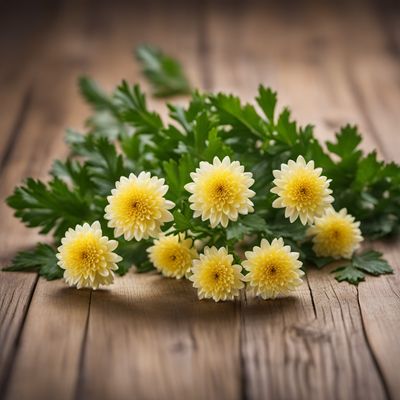
Garland chrysanthemums leaves
Edible Blossoms

Tannia leaves
The Versatile Tannia Leaves
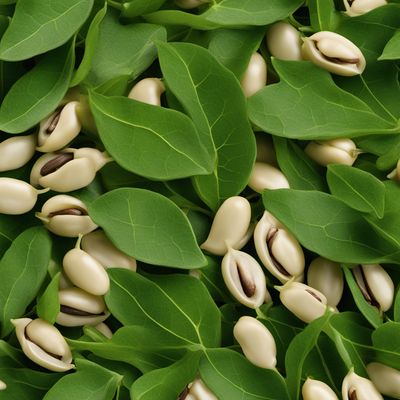
Black eyed peas leaves
Leafy Goodness

Sweet potato leaves
The Leafy Marvel
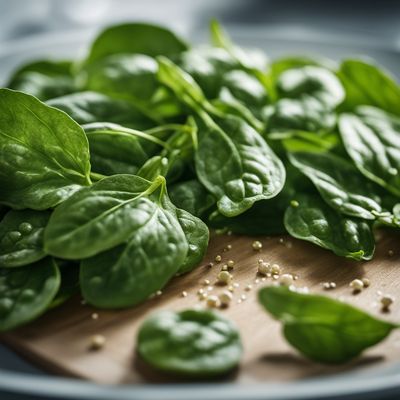
Spinaches
The Mighty Leafy Green

Amaranth leaves
The Nutrient Powerhouse: Exploring the Versatility of Amaranth Leaves

Bitterleaves
The Bitter Beauty
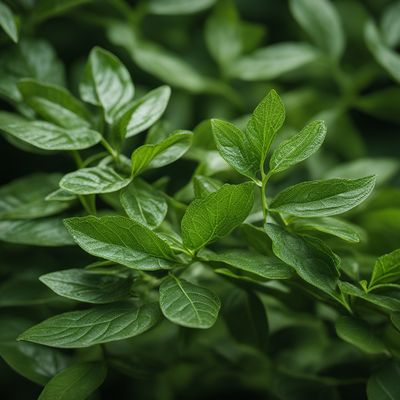
Bitterblad leaves
The Bold and Bitter Bites: Exploring the World of Bitterblad Leaves

New Zealand spinaches
The Versatile Green Delight
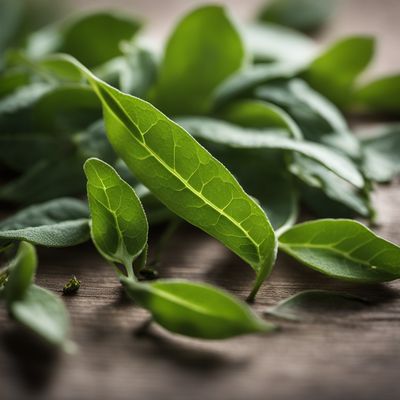
Oraches leaves
The Versatile Green: Oraches Leaves
Recipes using Cassava leaves » Browse all

Caribbean Spiced Coconut Curry
Tropical Delight: Caribbean Spiced Coconut Curry

Maniçoba: Traditional Brazilian Cassava Stew
Amazonian Delight: A Flavorful Journey through Brazil's Maniçoba

Pepes Tahu with Fragrant Spices
Indonesian Delight: Fragrant Pepes Tahu

Brački Vitalac with a Paraguayan Twist
Savory Paraguayan-Style Brački Vitalac: A Fusion of Flavors
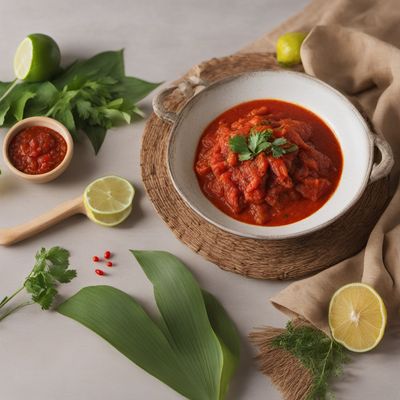
Liboké de poisson with Spicy Tomato Sauce
Flavors of the Congo: Spicy Fish in Tomato Sauce
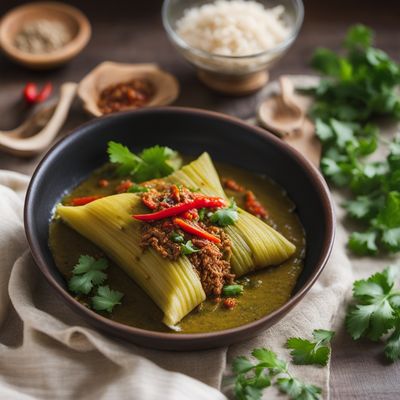
Tolimense Tamales with a Twist
Colombian Delight: Tolimense Tamales with a Modern Twist
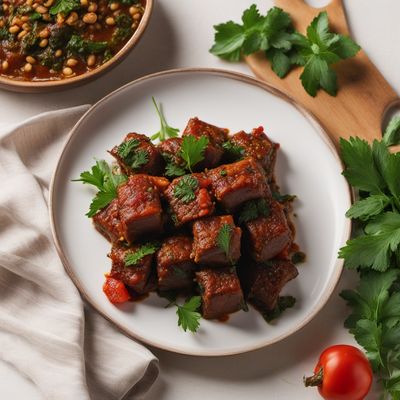
Guinea-Bissauan-style Beef Involtini
Savory Beef Rolls with a Guinea-Bissauan Twist
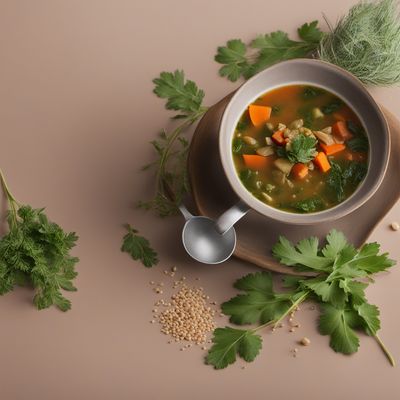
St. Kitts and Nevis Style Barley Soup
Caribbean Comfort: St. Kitts and Nevis Style Barley Soup
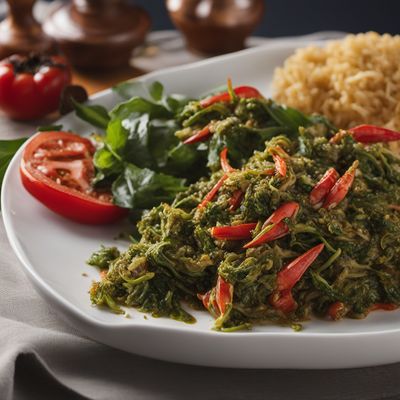
Crab and Callaloo Delight
Tropical Seafood Medley: Crab and Callaloo Delight
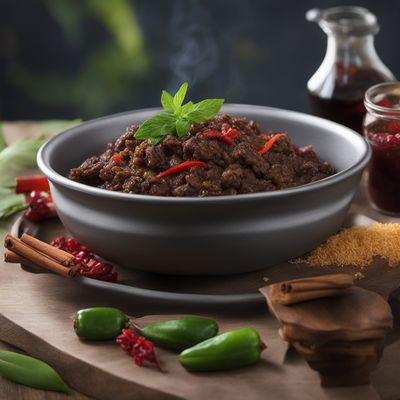
Fungee and Pepperpot Delight
Savory Cornmeal Dumplings with Hearty Meat Stew

Surinamese-style Hogao
Savory Surinamese Hogao: A Fusion of Flavors

Chiapas-style Steamed Rice with Banana Leaves
Tropical Delight: Chiapas-inspired Steamed Rice Parcels